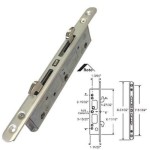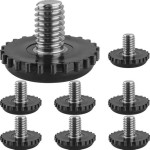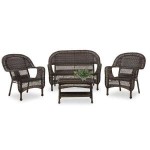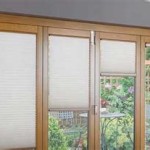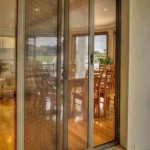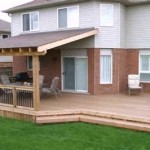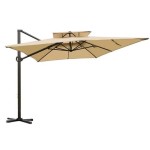Understanding Sliding Glass Patio Door Sizes
Sliding glass patio doors offer a seamless transition between indoor and outdoor living spaces. Their popularity stems from their ability to maximize natural light, provide unobstructed views, and offer convenient access to patios, decks, and backyards. A critical aspect to consider when selecting a sliding glass patio door is its size. The dimensions of the door directly impact its functionality, aesthetics, and installation requirements. This article provides a comprehensive overview of sliding glass patio door sizes, exploring standard dimensions, factors influencing size selection, and custom options.
Accurately determining the appropriate size for a sliding glass patio door is crucial for a successful installation. A door that is too small may appear disproportionate to the surrounding wall space and limit the amount of natural light entering the room. Conversely, a door that is too large may require significant structural modifications to the wall opening, potentially increasing installation costs and complexity. Understanding the range of available sizes and the factors that influence size selection will enable homeowners and contractors to make informed decisions.
Sliding glass patio doors typically consist of two or more panels, with at least one panel sliding horizontally to open and close. The overall dimensions of the door are determined by the width and height of these panels, as well as the width of the frame. The frame itself contributes to the overall size, requiring careful consideration during the measurement and ordering process. Standard sizes are readily available from manufacturers, offering a cost-effective and convenient option for many installations. However, custom sizes can be fabricated to accommodate unique architectural designs or specific aesthetic preferences.
Standard Sliding Glass Patio Door Sizes
While custom dimensions are possible, standard sizes represent the most common and readily available options for sliding glass patio doors. These standard sizes are designed to fit common wall opening dimensions, simplifying the installation process and reducing costs. Understanding these common sizes is essential for planning renovations or new construction projects.
The width of a sliding glass patio door refers to the overall horizontal measurement of the door frame. Standard widths typically range from 5 feet to 12 feet. The most common widths include 5 feet, 6 feet, 8 feet, 9 feet, and 12 feet. A 6-foot wide door is often chosen for smaller patios or balconies, while wider doors, such as 8-foot or 12-foot options, are commonly used for larger openings to create a more expansive connection between the indoor and outdoor spaces.
The height of a sliding glass patio door refers to the vertical measurement of the door frame. Standard heights generally range from 6 feet 8 inches to 8 feet. The most prevalent height is 6 feet 8 inches (80 inches), which aligns with the standard height for interior doors in many residential buildings. An 8-foot high door can create a more dramatic effect, maximizing natural light and offering a more panoramic view. However, taller doors may require additional structural support and may be more expensive.
Within these broad ranges, specific size increments are available. For example, a door might be offered in widths of 5 feet, 5 feet 6 inches, 6 feet, and so on. Similarly, height options might include 6 feet 8 inches, 6 feet 11 inches, 7 feet, and 8 feet. The availability of these specific sizes will vary depending on the manufacturer and the specific door model. It is recommended to consult with a door supplier or contractor to determine the available standard sizes for a particular door style.
When choosing a standard size, it's crucial to consider the rough opening, which refers to the framed opening in the wall where the door will be installed. The rough opening should be slightly larger than the overall dimensions of the door frame to allow for shimming and adjustments during installation. Typically, an extra inch or two of space is added to both the width and height of the door frame to create the rough opening. Accurate measurements of the rough opening are essential to ensure a proper fit and prevent installation issues.
Manufacturers often provide detailed specifications sheets that outline the exact dimensions of their sliding glass patio doors, including the frame dimensions and the recommended rough opening size. These specifications should be consulted before ordering a door to ensure compatibility with the existing or planned wall opening. Failing to account for the necessary clearances can lead to costly modifications or delays during installation.
Factors Influencing Sliding Glass Patio Door Size Selection
Selecting the appropriate size for a sliding glass patio door involves careful consideration of several factors, including the size of the opening, the surrounding architectural style, the desired amount of natural light, and budgetary constraints. Addressing these factors will result in a choice that is both functional and aesthetically pleasing.
The size of the existing or planned wall opening is the primary determinant of the door size. It is essential to accurately measure the width and height of the rough opening to ensure that the chosen door will fit properly. As previously mentioned, the rough opening should be slightly larger than the overall frame dimensions to allow for adjustments during installation. If the existing opening is not a standard size, custom door dimensions may be required, which can increase the cost and lead time.
The architectural style of the home should also be considered when selecting a sliding glass patio door size. In contemporary homes with clean lines and minimalist designs, larger doors are often preferred to maximize the feeling of openness and connection to the outdoors. In more traditional homes, smaller or proportionally designed doors may be more appropriate to maintain the overall aesthetic harmony.
The desired amount of natural light is another important factor. Larger doors naturally allow more natural light to enter the room, which can brighten the interior space and reduce the need for artificial lighting. However, excessive sunlight can also cause glare and increase cooling costs during the summer months. The orientation of the door (e.g., facing east, west, south, or north) can influence the amount of sunlight it receives, as well as the need for shading devices such as curtains or blinds.
Budgetary constraints also play a significant role in the size selection process. Larger doors generally cost more than smaller doors, due to the increased material usage and complexity of manufacturing. Custom dimensions can further increase the price. Installation costs can also vary depending on the size and complexity of the installation. It is therefore prudent to establish a budget and explore different size options within that budget.
Consideration should also be given to the intended use of the patio door. If the primary purpose is to provide easy access to the patio or backyard, a wider door might be preferred. If the main focus is to maximize natural light and views, a taller door might be a better choice. The frequency of use and the number of people who will be using the door should also be considered. A wider opening can improve traffic flow and reduce congestion, making it easier for people to move between the indoor and outdoor spaces.
Custom Sliding Glass Patio Door Sizes
While standard sizes provide a convenient and cost-effective option for many installations, custom sized sliding glass patio doors offer flexibility to accommodate unique architectural designs or specific aesthetic requirements. Custom dimensions allow homeowners and architects to tailor the door to fit precisely within the available space and achieve the desired visual effect.
Custom-sized doors are particularly useful in situations where the existing wall opening does not conform to standard dimensions. Older homes, for example, may have openings that are slightly smaller or larger than the standard sizes offered by manufacturers. In these cases, ordering a custom door can eliminate the need for costly and time-consuming modifications to the wall opening.
Custom dimensions can also be beneficial in new construction projects where the architectural design calls for specific door sizes that are not readily available. Architects may specify unique dimensions to maximize views, optimize natural light, or create a particular design aesthetic. Custom doors allow these design visions to be realized without compromising on functionality or visual appeal.
The process of ordering a custom-sized sliding glass patio door typically involves providing the manufacturer with precise measurements of the rough opening. Some manufacturers offer on-site measurement services to ensure accuracy. It is essential to double-check all measurements before placing the order, as custom doors are typically non-refundable.
Custom-sized doors often come with a higher price tag than standard sized doors. The increased cost reflects the additional labor and materials required to manufacture a door to specific dimensions. Lead times can also be longer for custom doors, as they are typically made to order. It is important to factor these costs and timelines into the overall project budget and schedule.
Despite the higher cost and longer lead times, custom-sized sliding glass patio doors offer several advantages. They ensure a perfect fit, eliminate the need for modifications to the wall opening, and allow for greater design flexibility. For homeowners and architects who prioritize a seamless integration of the door with the surrounding architecture and want to achieve a unique aesthetic, custom doors can be a worthwhile investment.
In conclusion, understanding the available sliding glass patio door sizes, the factors that influence size selection, and the options for custom dimensions is essential for successful project planning. Careful consideration of these aspects ensures a functional, aesthetically pleasing, and well-integrated transition between indoor and outdoor living spaces.

What Is Standard Sliding Glass Door Sizes Width Dimensions And Measurements

Patio Door Sliding Glass Doors

Jeld Wen 72 In X 80 V 2500 Desert Sand Vinyl Left Hand 10 Lite Sliding Patio Door Thdjw181500193 The Home

Sliding Glass Door Made To Size Service Wallpaper For Windows

Sliding Patio Doors Sizes And Configuration Vinylguard

Aluminium Sliding Doors Prices Sd1821 Patio Door Sizes Sigmadoors

What Is Standard Sliding Glass Door Sizes Width Dimensions And Measurements

Sliding Doors Dimension Sd3621 Aluminium Sigmadoors

Sliding Patio Doors Aluminium Glass

Sliding Door Dimensions Glass Doors Patio
See Also

